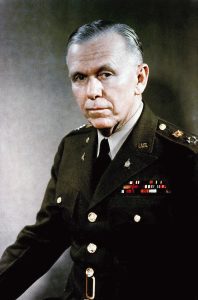
Aleppo after an Airstrike
Thomas Rassloff picture alliance / dpa
Angela Merkel has faced a lot of criticism in recent months. Public support in Germany for the chancellor has waned. The main reason for that is her decision from last summer not to close the borders to the massive number of refugees from Syria, Afghanistan and Iraq seeking shelter, as did her Hungarian counterpart Viktor Orbán for example. Instead, she called on her fellow Germans to show solidarity. She famously said, “Wir schaffen das” – “We’ll cope.”
In the recent elections to the state parliament in Mecklenburg-Western Pomerania, Merkel’s Christian Democrats were sorely punished, slumping to third place behind the hard-right nationalist anti-immigration Alternative for Germany (AfD) party. The Social Democrats took the largest share of the vote. What is more, the constituency Merkel represents in the national parliament is in that very state. Particularly noteworthy is the fact that this region in the northeast of Germany has hardly been affected by the influx of refugees. There are just 2,300 amid 1.6 million residents. Relative to population size, that is far fewer than in other regions.
The civil war that has raged in Syria since 2011 is making its mark on Germany. The chancellor’s open-arms approach to refugees encouraged people from many troubled countries to head to Europe and in particular to Germany. Her government has since modified its position, and made a deal with Turkey’s controversial President Recep Tayyip Erdogan to limit the flow of refugees into the European Union. Still, the debate on refugee policy rages on.
In this context, an idea is gaining traction that was already mooted last year, when Germany’s Minister for Economic Cooperation and Development, Gerd Müller, called for a Marshall Plan for Syria. It is not only Syria, but also Iraq and Afghanistan that need the kind of development financing that the United States offered European states in 1947 in the aftermath of the Second World War. The Marshall Plan provided nearly $13 billion in aid before the program ended in 1951. Much of that money went into investment in industrial capacity. This was not simply humanitarian aid, but a way to open and secure markets for US products.
Any new Marshall Plan for Syria and other countries would differ from the original in two key respects: The funding would not come from a single country but from several countries working together. And secondly, while the fronts were clearly defined after WW II, that is not at all the case in today’s Syria, Iraq or Afghanistan. In each of these countries, there are some areas where war is not raging, but for how much longer? Could full-scale chaos resume in each or all of them?
The government of Bashar al-Assad would have us believe that life carries on as “normal” in Syria. Its tourist board recently released a promotional video bearing the slogan “Syria – always beautiful” to entice foreigners to visit the country. You could never tell from the footage that Syria is in the midst of a brutal civil war that has killed more than 400,000. The video shows the beach at Tartus with people enjoying themselves, sunbathing and jet-skiing. In fact, one of the fronts in the war is just 100 kilometers away.
Would it work?
The Syrian tourism ministry claims the number of visitors in July was 30% higher than in the same period last year, but it does not offer any figures. There is every reason to doubt the truth of such a bizarre assertion. Granted, the coastal region, with the resorts of Latakia and Tartus, has remained peaceful so far. Most people there are Alawites and are believed to support Assad, himself a member of the Alawite minority. But it is doubtful that the calm in that particular region makes it a safe place for a carefree holiday.
More generally, the crucial question is whether there is sufficient calm or stability in the region to warrant throwing large amounts of money at it in order to improve the lot of the people living there. Would it work? The “Supporting Syria and the Region” conference in London in February failed to come up with a unified response, and the G20 summit in China in early September only yielded empty words.
15 million of the world’s 60 million displaced people live in the failing or failed states of Syria, Iraq and Yemen and adjacent countries. The UN estimates almost $9 billion are needed this year alone to help deal with the consequences of the Syrian crisis. Last year it estimated the sum needed for emergency aid for the displaced at $7.4 billion. Monies disbursed under any new Marshall Plan would go towards making life more bearable for the refugees in the region. That would give them less reason to try to make it to the European Union. But how much money would be needed to really make a difference? Under the original Marshall Plan, European nations received close to $13 billion in aid from the United States. The equivalent today would be closer to $130 billion. Who should provide such a sum? And more importantly, who should oversee its disbursement and ensure it actually goes where it is needed?
The political situation is extremely complex and hard to untangle. It is uncertain how long the ceasefire agreed by the US and Russia will last. Turkey is fighting both Islamic State and the Kurds, though the Kurds are also fighting IS. Russia supports Assad against both rebel groups and IS. And who knows what the United States might decide to do once its new president assumes office next January?
Klaus Dieter Oehler is financial editor at the daily Stuttgarter Zeitung


